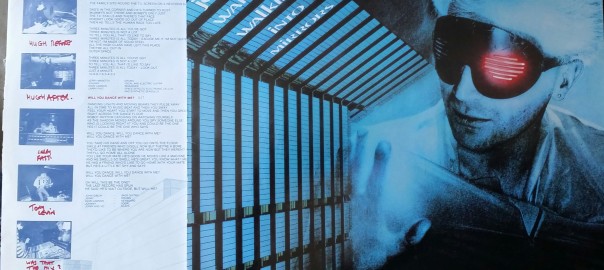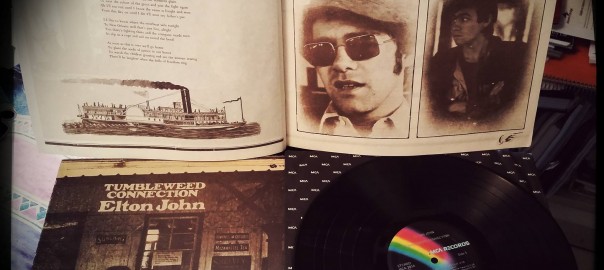Welcome to the second post in a new occasional project: revisiting music that has sat, unplayed, in my vinyl collection for so long I don’t remember what it sounds like. Often these are albums from artists whose other work I like, or that I bought because a song or two caught my attention, or that thought I “should” have for whatever reason. Sometimes they are albums that once got a lot of play but for some reason drifted out of consciousness. I think we all have managed to accumulate a few of these albums.
So I’ve decided that this blog is a perfect excuse to haul them out, dust them off, give them a spin, and write up short reviews to tell you about them. With luck, I will discover some forgotten treasures. On the other hand it may inspire me to get rid of stuff and open up some much-needed (Much. Needed.) space for albums I might actually want to own.
Walking Into Mirrors by Johnny Warman
Released: 1981
Lineup:
Johnny Warman: music, lyrics, vocals, electric guitar, acoustic guitar
Guest Musicians:
- Jerry Marotta: drums, percussion
- Larry Fast: keyboards and synth effects
- Tony Levin: bass, stick
- John Giblin: bass
- Dave Lawson: synthesizers and sequencing
- Peter Gabriel: vocals (track 5)
Tracklist:
- Walking into Mirrors
- Radio Active
- Searchlights
- Martian Summer
- Screaming Jets
- Three Minutes
- Will You Dance with Me?
- (S.O.S) Sending Out Signals
- Dancing Dolls
- Fantastic Light
Johnny Warman is a British singer/songwriter whose most successful phase was during the 1980s; he has made a few albums over the years, and is still active, but Walking Into Mirrors was the only album that really made any kind of impact. The track “Screaming Jets” became a minor hit and probably is the only song that Warman may be remembered for–and that is largely due to the guest vocals of Peter Gabriel who was hitting his stride as a solo artist in that decade.
And yet…while Warman may seem to be a One-Hit Wonder, it does not feel right to actually call him that, mostly because it is unlikely that Walking Into Mirrors got the play or attention it really deserved. “Screaming Jets” as a single had the name cachet of Gabriel to drive sales, but the entire album is stellar, with several tracks arguably superior.
Walking Into Mirrors is unmistakably an album of the 1980s, with its short, bass-heavy, densely synth-driven pop songs, effortlessly evoking the night-club dance-fests and the unquiet angst that the relentless clubbing could never quite dispel. But dig beneath the surface: the lyrics, the superb arrangements — these songs are piercingly intelligent, incisive both lyrically and musically; the lyrics are full of anxious trepidation, loneliness, desperate hope, quietly apocalyptic, but the music is upbeat, poppy and sometimes even cheerful – the world may end in a blinding flash, but the aliens are here because they are lonely without music of their own…and will you dance with me?
Much of the success of the sound of this album is down to the outstanding roster of guests. Warman was held in such regard at one time that iconic 80s musicians were happy to show up to lend their chops: pioneering synthesizer whiz Larry Fast; drummer Jerry Marotta (who stepped in because Phil Collins couldn’t make it) and who went on to become a hugely in-demand player for just about everybody; prolific studio and guest bassist John Giblin; and the legendary Tony Levin on bass and stick. And of course, Peter Gabriel…. Warman wrote the music and lyrics, and does the vocal job with his distinctive Cockney accent (which may make or break this album depending on one’s tolerance for … “interesting” voices).
This was an album that I used to play a lot. Most of the songs are eminently listenable, ranging from pure 80s synth-pop to gentle, almost ambient electronic-based balladry. The standouts include not only “Screaming Jets” with Warman talking the lyrics and directing the key changes while Gabriel wails and cries eerily in the background; but also the disquietingly cheerful “Dancing Dolls” featuring Levin’s distinctive stick bass sound.
But the real crank-to-eleven show-stopper is the last track, “Fantastic Light”. Majestically funereal, an ominous slow synthesizer line and massive snapping snare underlie Warman’s desperate keening vocals: “I’m waiting for that one fantastic light” — an apocalyptic warning if ever there was one.

